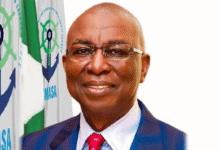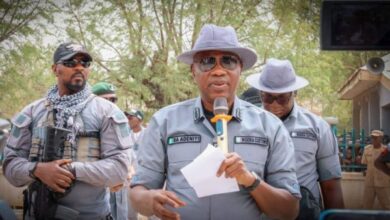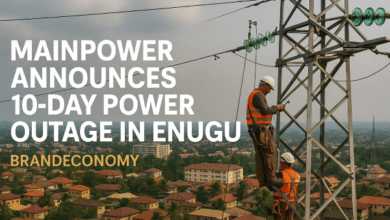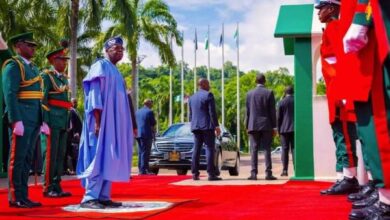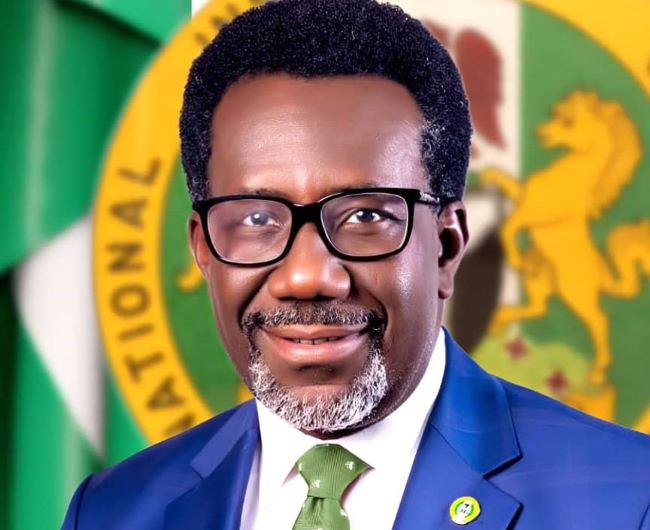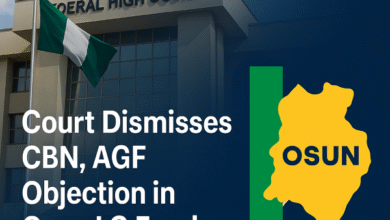All over the world, one of the milestones of development is effective road network along with other critical mass transit infrastructure but in Lagos and other parts of the country, not only are the roads littered with crater-sized potholes and gullies, they are death-traps. BRANDPOWER examines the current state of the decrepit roads and the challenges facing the new Lagos state governor, Babajide Sanwo-Olu in saving Lagosians from the harrowing effects of dilapidated roads.
Smooth, motorable roads are catalysts for economic development.Well-graded roads often deliver economic and social benefits that enhance citizens’ standard of living by creating access to commerce, employment, social, health and education and services needed to create wealth and lift millions from poverty.
Good road-network and other modern means of mass transportation open up more areas and promote seamless economic activities as they fast-track easy movement of vehicles, commuters and other road users for smooth daily business and social transactions. This explains why governments of developed nations work strategically on their road and transport networks to deliver the many benefits of modern living.
Unfortunately, Nigerians and, in particular, Lagosians have in recent times been denied this basic dividend of democracy, no thanks to the abandonment of key roads by the Ambode administration and the Buhari’s first-term administration. While citizens of some developed countries such as the United States smile daily to the bank owing to the booming nature of their economies; Nigerians daily groan under intense hardship and economic meltdown due to the deplorable nature of Nigerian roads.
From the key expressways in Lagos to the adjoining inner streets in high density areas, things took a turn for the worse in recent years as Lagosians wailed under the weight of dilapidated roads complete with crater-sized potholes and gullies. Sometimes, traffic robbers take advantage of the derelict roads to dispossess motorists of their valuables especially at night with some innocent Nigerians sometimes losing their lives in the process.
Statistics of Nigeria’ annual loss to bad roads
In 2003, The CBN said in one of its reports that Nigeria lost N80 billion to bad roads annually, while additional vehicle operating cost resulting from bad roads was valued at N53.8 billion, bringing the total country’s loss per annum to N133.8 billion as at then. However, as at November, 2018, the country’s total loss to impassable road hit N450billion according to Mrs Amina Shamaki, the permanent secretary in charge of special services at the office of the Secretary to the Government of the Federation. This huge figure is outside all other economic losses from bad roads in the area of air pollution, delayed movements, armed robbery and incessant accidents on the roads.
 From the mainland in Lagos to the Island, the densely populated Ikeja, Ijesha, Isolo to the highbrow Victoria Island, Lekki and Ikoyi, the embarrassing sight of the decrepit roads slay in dare-devil fashion. State-owned roads in Lagos are just as horrible as stretches of roads controlled by the federal government despite the huge taxes and levies the Lagos state government squeeze out from residents and company-owners.
From the mainland in Lagos to the Island, the densely populated Ikeja, Ijesha, Isolo to the highbrow Victoria Island, Lekki and Ikoyi, the embarrassing sight of the decrepit roads slay in dare-devil fashion. State-owned roads in Lagos are just as horrible as stretches of roads controlled by the federal government despite the huge taxes and levies the Lagos state government squeeze out from residents and company-owners.
Many inner city roads which serve as links to the major roads are in sorry state. From every corner of the state, Mushin, Ijesha, Ikotun, Ijegun, Ikorodu, IgbogbotoIjede, Adamo and Mojoba, it has been lamentations from residents and motorists over persistent vehicle damage and loss of man hours on the roads. Kemberi road, Aka road and Jakande road in Ojo Local Government are also impassable.
According to the transport statistics released by the Lagos Bureau of statistics in 2018, over 5 million cars and 200,000 buses both private and commercial ply Lagos roads daily. But unfortunately, most of the roads especially the major highways like the Oshodi-Apapa expressway and the Lagos-Badagry route are in terrible state, riddled with potholes which have become gullies defacing the state and endangering the populace with the resultant downtime and harrowing traffic gridlock.
Ever busy roads within the Lagos metropolis such as Herbert Macaulay, Agege Motor Road, Lawanson-Itire and LUTH-Idi-Araba also have their fair share of yawning pot-holes. Road in parts of Yaba, Mafoluku, Oshodi, Ogba, Ojudu, Ketu, Agege, Mushin, Surelere, Bariga, Shomolu, Oke-Odo, Abule-Egba are not left out. The depth of gullies at the Agege Motor Road by Mushin Bus-Stop is highly mind-bugling. The ever-busy Ikorodu Road is equally not spared as failed portions increase travel time by as much as 300% at key high influx periods. This results in financial losses for vehicle owners and public commuters who are forced to spend more on fuel, maintenance and transport fares respectively.
How the deplorable state of roads has devalued the Lagos Brand Value
The deplorable state of roads in Lagos has really made life unbearable. It has killed many businesses, drastically weakened the GDP and economy of the ‘State of Excellence’.The Economist Intelligence Unit and World Bank in their last Global Liveability Index ranked Lagos the third worst city for humans to live in the world. The state was ranked 138 out of the 140 cities considered for the ranking. This, however, was a slight improvement from the 2017 ranking, where the country was ranked 139th out of 140 cities on the index.
 According to the latest ranking, Lagos only outperformed Dhaka in Bangladesh and Damascus in war-torn Syria. Out of an overall score of 100, Lagos was rated 38.5 points.The ranking was based on Social Stability, Healthcare, Education, Culture and Environment and Infrastructure.Other African cities that featured on the index were Dakar (Senegal), which was ranked 131 out of 140; Algiers (Algeria) – 132; Doula (Cameroun) – 133; Tripoli (Libya) – 134 and Harare (Zimbabwe) – 135;Vienna, the Austrian capital, was ranked the most liveable city in the world, as Melbourne finally lost the title after a seven-year reign. The Japanese city of Osaka was adjudged the third most liveable city.
According to the latest ranking, Lagos only outperformed Dhaka in Bangladesh and Damascus in war-torn Syria. Out of an overall score of 100, Lagos was rated 38.5 points.The ranking was based on Social Stability, Healthcare, Education, Culture and Environment and Infrastructure.Other African cities that featured on the index were Dakar (Senegal), which was ranked 131 out of 140; Algiers (Algeria) – 132; Doula (Cameroun) – 133; Tripoli (Libya) – 134 and Harare (Zimbabwe) – 135;Vienna, the Austrian capital, was ranked the most liveable city in the world, as Melbourne finally lost the title after a seven-year reign. The Japanese city of Osaka was adjudged the third most liveable city.
Salvage efforts of the Ambode Administration
As a way of salvaging the road challenges of key roads in Lagos, the Ambode administration in 2015 appointed Engr. AyotundeSodeinde as General Manager of the Lagos State Public Works Corporation (LSPWC) and subsequently declared ‘Operation fix all potholes’. Saddled with providing road infrastructure such as construction, reconstruction and maintenance; LSPWC immediately established two asphalt plants in Imota and Badagry in addition to the one at Ojodu Berger to boost its operations in terms of asphalt production. Within the first four months of its existence then, the Sodeinde-led Corporation was said to have maintained over 192 roads. Meanwhile, in 2017, Ambode approved the construction of 381 roads across Lagos 57 councils according to reports. The roads were reportedly selected by members of the State Executive Council and members of the House of Assembly. Sadly, not up to 24 months after, some of the refurbished roads among which were Ikotun, Igando, IsheriOshun, Odunsin Street, Bariga and Mosadologun/Onigemo Street in Apapa have returned to their old impassable states. Can we then say the roads were effectively done in the first place? A visit to most of the aforementioned roads will reveal the unpalatable answer.
The Agony of commuters and residents on Oshodi/Apapa Expressway
Of all the roads in Lagos, the Oshodi/Apapa Expressway remains one of the busiest in terms of economic activities; yet, it is also one of the most neglected. As a result of the heavy human and vehicular traffic on the road daily, wear and tear is expected to equally be rapid; hence the need for concerned authorities to always be on hand to attend to such occurrences.But the unfolding scenario on this road, suggests either a sloppy pace of doing so, or outright insensitivity on the part of government in attending to the plight of the road users.
 Recently, President Mohammadu Buhari ordered the relocation of all the heavy-duty trailers on the road, but it seems the government is incapable of curbing the excesses of the articulated vehicle and tanker drivers (or owners) who constitute a great deal of nuisance from the Cele Bus Stop, Westminster and Warehouse bus stops to the Coconut Bus Stop axis of the road all the way to Tin-Can port. Consequently, a lengthy stretch of this part of the road, especially the service lane, has long been deserted by other motorists for trucks and tankers.
Recently, President Mohammadu Buhari ordered the relocation of all the heavy-duty trailers on the road, but it seems the government is incapable of curbing the excesses of the articulated vehicle and tanker drivers (or owners) who constitute a great deal of nuisance from the Cele Bus Stop, Westminster and Warehouse bus stops to the Coconut Bus Stop axis of the road all the way to Tin-Can port. Consequently, a lengthy stretch of this part of the road, especially the service lane, has long been deserted by other motorists for trucks and tankers.
Beyond taking up nearly every available space, the carelessness displayed by the drivers, the ever-expanding craters on the road, usually lead to these articulated vehicles developing mechanical faults and causing severe traffic snarl which sometimes keep commuters on the road for 8 to 12 hours especially when it rains. This is usually exacerbated by the clogged drainages, which to a large extent; ensure that vast stretches of the road remain flooded weeks after a heavy downpour.
Considering the fact that this road leads to one of Nigeria’s busiest and biggest sea ports- the Tincan Port, several tank farms and other money-spinning businesses, one would have thought that keeping it in good shape would be a top priority of government but it seems the reverse is the case as the road is currently in a shambolic state. No thanks to the previous Ambode government and the first term reign of President Muhammadu Buhari both of which failed to provide a key dividend of democracy in this area. Babajide Sanwo-Olu has taken over the mantle in Lagos and it is imperative for his administration to earn the respect, love and trust of Lagosians by finally collaborating with the federal government to bring succour to Lagosians who daily ply this route. Lagosians have not taken lightly his pledge to clear this tragic of infrastructural failure within the six months.
The Shameful state of Lagos/Badagry Expressway
The sorry state of the Oshodi-Apapa expressway is comparable to the dilapidated state of the Lagos/Badagry expressway. In recent years, the road has gone from bad to worse and this has taken its toll on the economy of the area and health of its residents. Moved by the untold hardship the damage of the road has caused, some of the residents and students recently defied a heavy rainfall to stage a massive protest over the state of the road. Many of them described the road as ‘path of anguish and pain’. During the protest, the residents blocked the popular Badagry roundabout holding placards with inscriptions such as, ‘Fix Lagos/Badagry Expressway. Our businesses are dying’; ‘Bad Road, Our pregnant women are having miscarriages’; ‘We are losing man-hours.’ These inscriptions simply capture the sorry nightmares the people are facing daily over the bad state of the road.
The Badagry Expressway was meant to link the road to areas like Mile 2, Iyana-Iba, Orile-Iganmu, Okokomaiko and other key areas. The road was meant to go alongside the Lagos Rail which will make the roads users have easy access to the public transportation at the snap of a finger but this seems not to be the case as the area remains a motorist’s nightmare.And now that there is a new government in place in Lagos, there is the need to put the road in a solid shape.
How Sanwo-Olu has come to the Rescue?
As a way of fulfilling their campaign promises to ease the pains on the Oshodi/Apapa expressway, Lekki-Epe as well as other roads within Lagos state and its international Badagry route with neighbouring West African countries, the new Lagos state Governor, Mr. Babajide Sanwo-Olu has said that his administration will prioritize the lanes especially the Lagos-Badagry and Lekki-Epe road projects.
 Speaking on Channels Television breakfast programme, Sunrise Daily, Governor BabajideSanwo-Olu said: “One of the major plans we have is the Lagos-Badagry express road which is not just an intercity because as it cuts across Agbara and towards the Seme-border. It is also a West-African transnational road. The road is such an important corridor that we are going to fix.”
Speaking on Channels Television breakfast programme, Sunrise Daily, Governor BabajideSanwo-Olu said: “One of the major plans we have is the Lagos-Badagry express road which is not just an intercity because as it cuts across Agbara and towards the Seme-border. It is also a West-African transnational road. The road is such an important corridor that we are going to fix.”
“Regarding all other state border roads, it is for us to have collaboration with Ogun State government and say let us look at the budget, this road 5km goes into your own state, 7km goes into my own state, let’s check the numbers, what are the trade-offs? Who has the comparative advantage? Who is collecting revenues on these corridors? I might be a bigger brother because I probably have a bigger budget. So, we deal with it and solve it”, he said.
Corroborating Sanwo-Olu’s statement on the Lagos roads, his deputy, Obafemi Hamzat noted that both Badagry and Lekki-Epe expressways are so critical to the economy of Lagos that no effort will be spared to ensure their early completion. He said: “Specifically, the ongoing 60-kilometre Lagos-Badagry Expressway project being executed by the state government must be completed as early as possible. The project has two major intermodal transport schemes namely; the Lagos-Badagry Expressway and the Light Rail Mass Transit with their accompanying infrastructure- 10 lanes superhighway taking off from Eric Moore interchange and traverses westward through OrileIganmu, Alaba Oro, Mile 2, Festac, Agboju, IyanaIba, Okokomaiko, Iyana Era, Ijanikin, Agbara, Ibereko and terminated at Badagry.
“The goal is to connect Lagos with the ECOWAS countries. The initiative would no doubt; enhance the commercial and other business activities between the affected neighbouring countries”. Hamzat
said.The deputy Governor added that the Lekki-Epe Expressway will be expanded and reconstructed, especially, from where it stopped now to the Lekki Free Trade Zone (LFTZ) in Akodo.
Already, Governor Babajide Sanwo-Olu, during his visits to the Lagos/Badagry expressway and some other bad roads within the city, directed the Lagos State Public Works Corporation to commence patching and rehabilitation of the bad roads to address the perennial problem of traffic in the state.While signing his first executive order recently, the governor also directed the Lagos State Traffic Management Authority to run at least two shifts and work till 11pm daily to facilitate free flow of traffic but the governor surely knows that there is little the LASTMA officials can achieve if major repairs and reconstruction is not urgently effected in roads across the state.
If the morning shows the day, then Sanwo-Olu’s initial sound-bites and actions in office is reflective of a man on a serious mission, reminiscent of the great governor Lateef Jakande who was fondly called the ‘action governor’. Thus, Sanwo-Olu’s promise to bring back the sunshine in the dark firmament hanging over Lagos roads is a promise that must be kept. That is the avid prayer of every Lagosian.
Samson Oyedeyi



